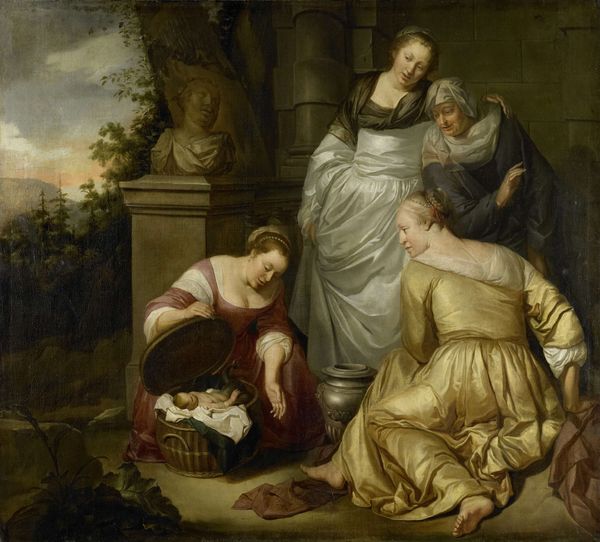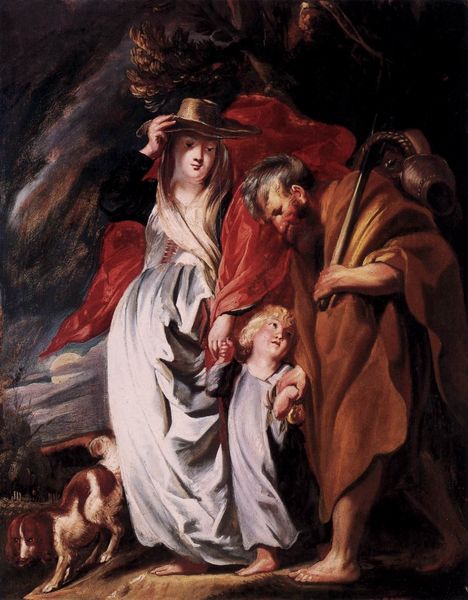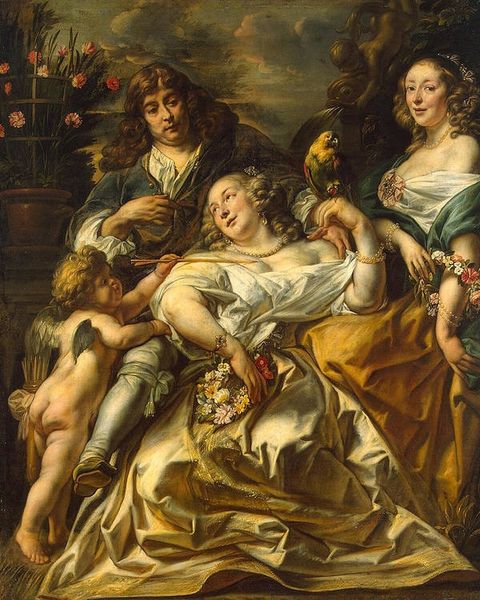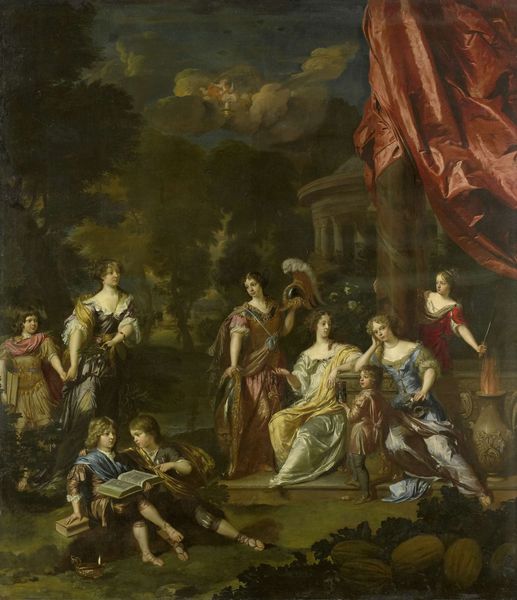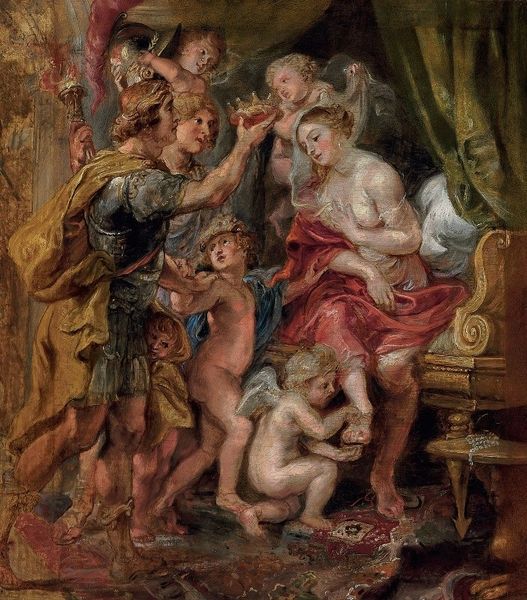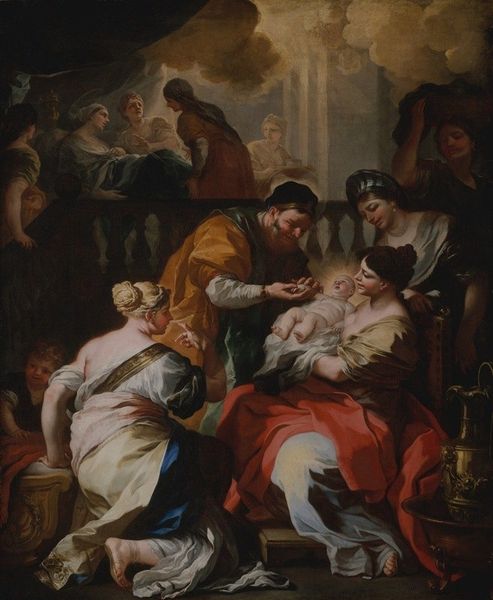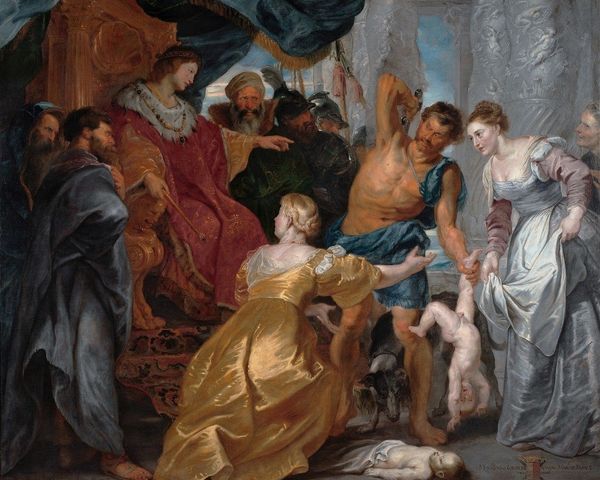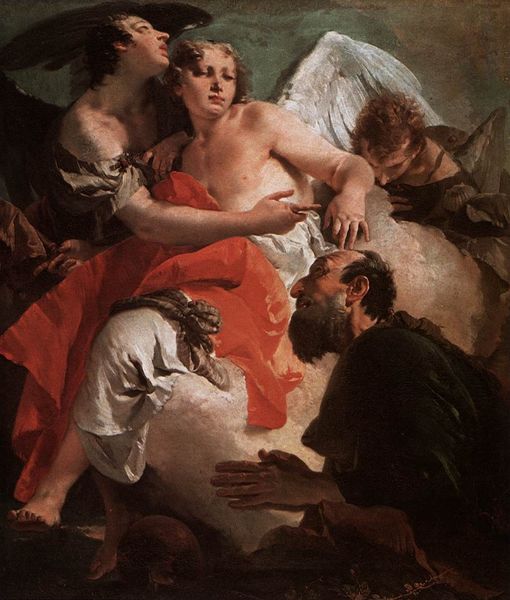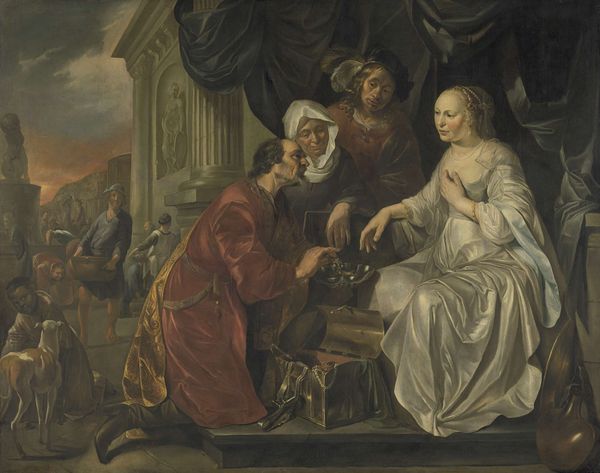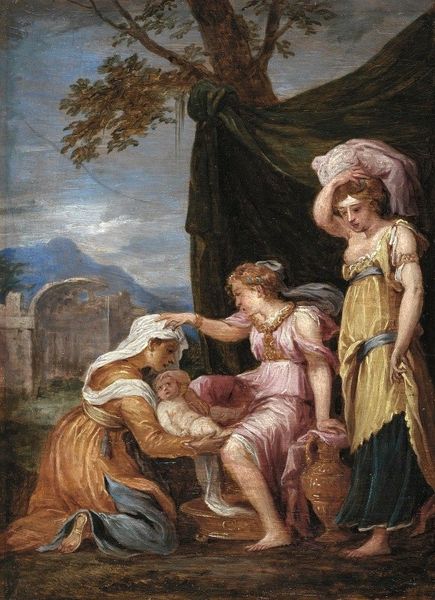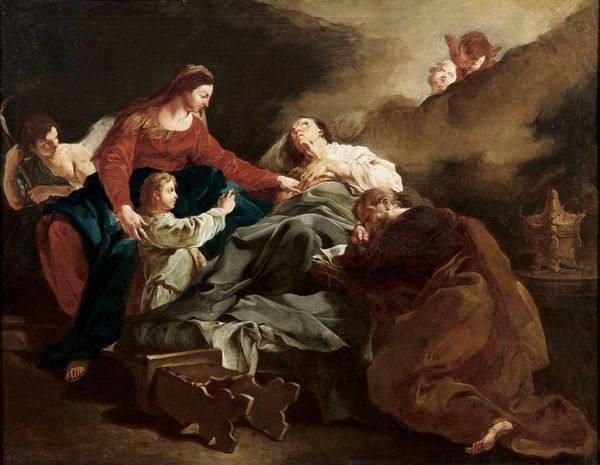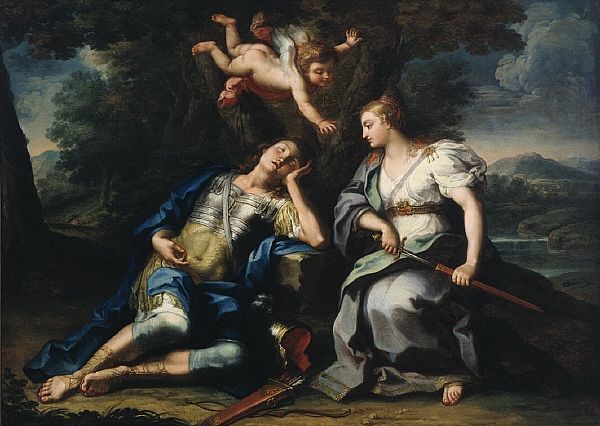
Copyright: Public Domain: Artvee
Curator: Here we have Paolo Veronese's "Judith and Holofernes," created around 1580. Editor: What strikes me is the odd tranquility juxtaposed with the gruesome subject matter. There's a stillness, an almost unsettling quiet, given what's transpiring. Curator: Observe how Veronese arranges the figures in a tight pyramidal composition. Judith, the central figure, holds Holofernes' head, creating a strong vertical axis countered by the horizontal corpse. Note the use of tenebrism, the dramatic play of light and shadow, heightening the emotional impact. Editor: Judith embodies the archetype of the righteous assassin, a symbol of defiance against tyranny and oppression. Holofernes, though dead, signifies the vulnerability of power when faced with moral courage. The contrast in their garments speaks to power structures overturned; she’s regal, he’s a discarded heap. Curator: Precisely. And the interplay between textures - the smooth, delicate skin of Judith versus the rough fabrics of her dress and the stark white linen. Even the metallic sheen of the discarded armor plays into Veronese’s compositional and chromatic choices. Editor: This painting, while depicting a biblical narrative, also mirrors the political climate of 16th-century Venice, which had always tried to embody resistance to authoritarianism and celebrate heroism. The purse her maid is holding seems symbolic of their next course of action, the quiet theft to save her people. Curator: A fascinating point. It draws out layers of how material forms are not merely representative but loaded with contextual and narrative heft. Editor: Veronese captures that timeless moment when bravery conquers brute force. Looking at the painting’s light and texture shows it, too. Curator: Indeed. It offers much more than meets the eye.
Comments
No comments
Be the first to comment and join the conversation on the ultimate creative platform.
